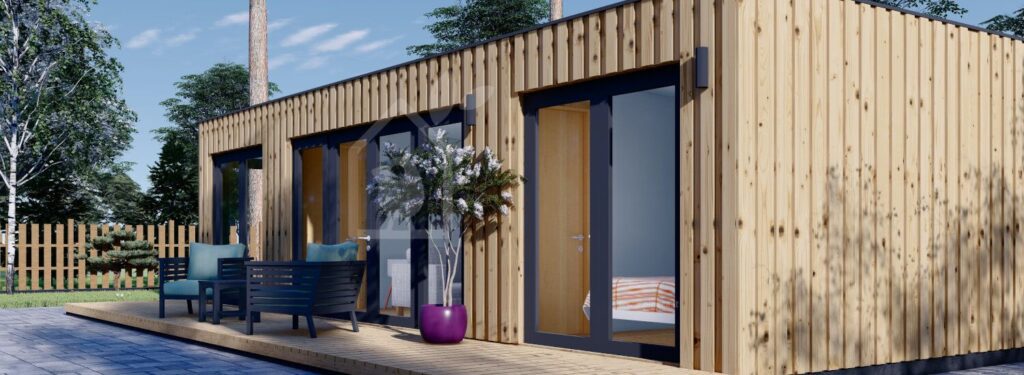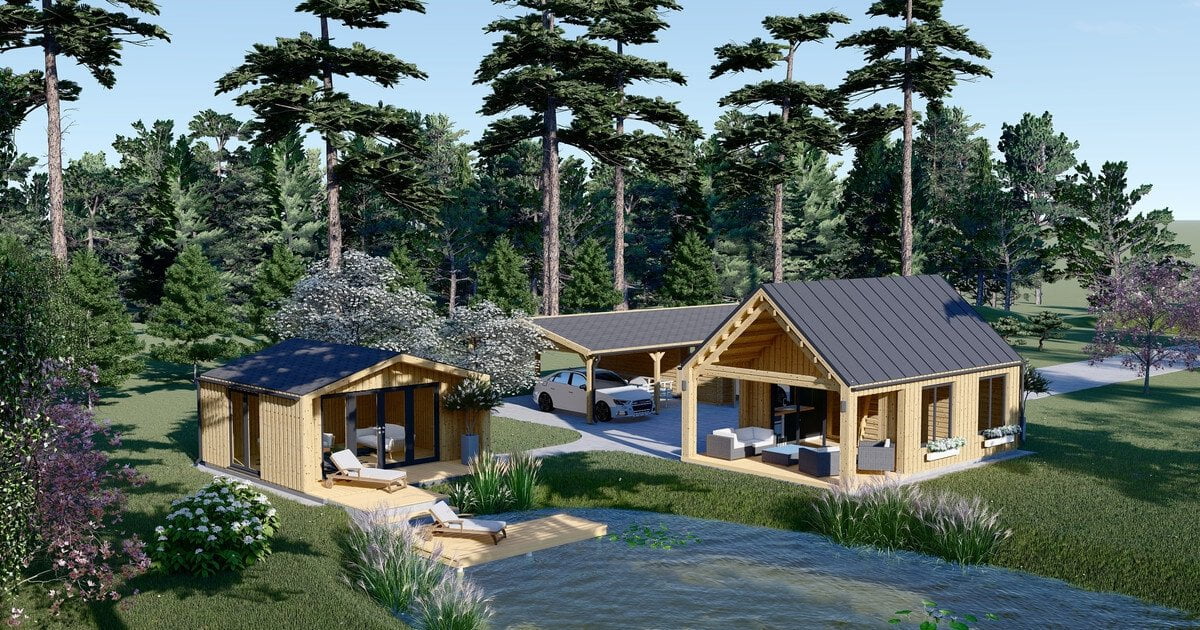We all know how important it is to be environmentally sustainable. One of the best ways to do this is to use eco-friendly products in our daily lives. Do you know a better material than wood? Biodegradable, recyclable, compostable, absorbs CO2, and has proven to have enormous potential in construction too.
Not to mention the environment. Housing a growing population in wooden homes instead of conventional concrete and steel could avoid more than 100 billion tons of greenhouse gas emissions between now and 2100. This is shown by a new study by the Potsdam Institute for Climate Impact Research1. In other words, of the 10 steps we need to achieve our climate objectives, one is this: it represents 10% of the carbon that we can 'sequester'.
From today to tomorrow

Whether you have a passion for a tiny house, or a small cottage, or simply want a "natural" garage, the boom in wooden houses is a direct response to the growing awareness of the importance of environmental sustainability. More and more people are looking for ways to reduce their impact on the planet. And using wood as a building material is one of the best ways to do this.
This is why we see more and more wooden houses popping up everywhere: people are realizing that they can have a beautiful and elegant home that is also environmentally friendly. While on the one hand traditional construction drops by 15%, in fact, green building marks an increase: and in 2021 in Italy it reached the notable figure of 1,39 billion euros (Source: Building Report of Assolegno).
And the best part is that wooden houses have also become surprisingly affordable. By now everyone is sensitized and demanding on the subject, and the very few solid marketplaces (In Italy we have Pineca, which has produced and designed over 1993 homes since 26.000: by the way, if you need a wooden house buy it here) are leading what in my eyes appears to be a veritable cultural revolution.
My experience

I started to educate myself when, with the first lockdown, I felt the desire to have a "rural" work space, making use of the garden. Put together with the right sources, I have obtained some suggestions that may perhaps be of use to you.
First, an admission: Choosing the right wooden house can also be very frustrating if you don't find the right partner straight away. For this reason, if you want to be ready and practical, you must start at least from the essential things: daily use, for example, is the first factor to consider. No. I'll rephrase that. It is the most important of all.
Think about how many rooms and how much space you will need. Also remember how often people or pets will come and go from the house throughout the day. Once you've determined how much living space you need, start looking for the type of wood that best suits your lifestyle. Keep in mind that wood types vary greatly in their response to weather conditions, humidity levels and temperature changes, all of which can affect the appearance and lifespan of your home. Finally, don't forget to take into account maintenance requirements and local building codes when choosing your home design. These considerations will help you choose a log home that provides years of comfort and satisfaction “to you and your families”, as Johnny Stecchino would have said (it's always wood).
Wooden houses: what about maintenance?
With its natural appearance and timeless style, a wooden house is a lovely asset, which must be well protected and well maintained. The good news is that if "the raw material" is good there is no need to lose your head over it.
Routine maintenance is what you would expect from a concrete house, more or less. The annual inspection of roofs to check for damage. Regularly checking that the wood preservative finish is doing its job. Finally, the guarantee of good air circulation. What did you expect? By following these tips and maintaining regular care over the years, you will be able to enjoy a log home that is beautiful inside and out for many years to come.
In short (Italian only)
Staying with the big picture, the study1 of the Potsdam Institute should serve as a true paradigm. The future is, indeed MUST be made of wood. All. From individual homes to large buildings. The estimates of researchers led by Abhijeet Mishra they say it is possible to build wooden houses from 4 to 12 floors. Without stealing land for food production. Above all without deforesting crucial points for the environment.
In our small way, however, we have the possibility to organize and plan the next buildings (even if they were a garage, or a canopy that makes a fine show of itself in the garden) using eco-sustainable materials that guarantee a future for our home, and that of others .
Clear, blockheads? :)


